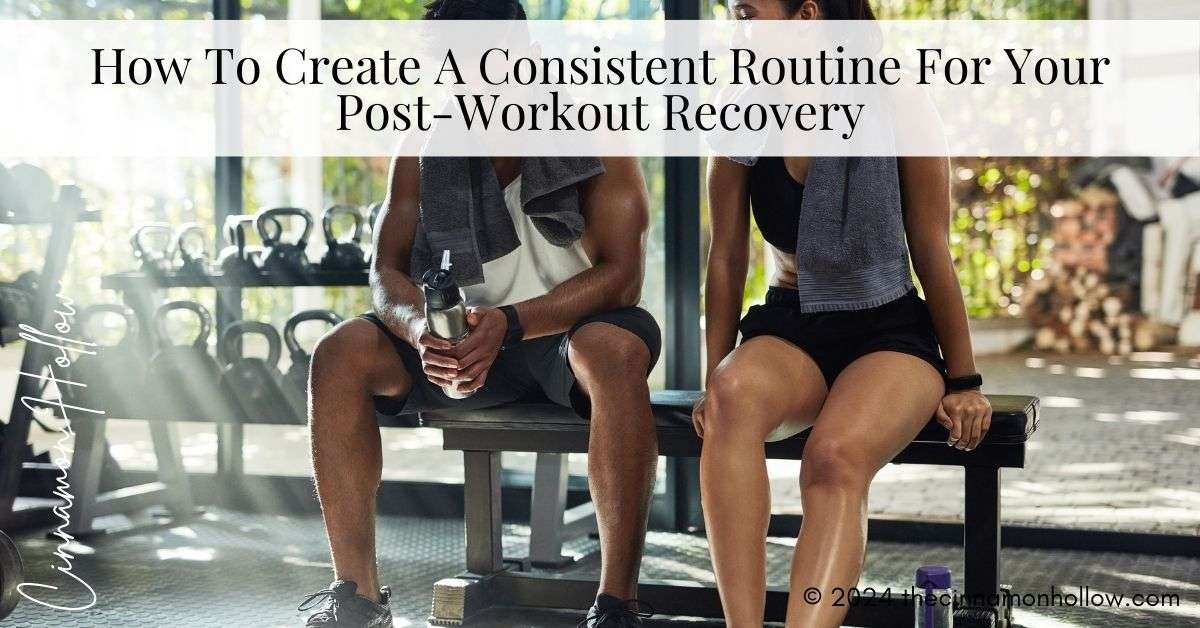Now, just imagine this scenario for just a moment; you’ve just wrapped up a tough workout, muscles are burning, and there’s that sense of accomplishment from pushing hard. You’re doing what you can to care for your body, right? Well, chances are, there’s probably more you should be doing.
In fact, one thing tends to get overlooked—the post-workout recovery routine. Yes, you’ve seriously read that right? Skipping post-workout recovery isn’t just a minor oversight; it’s a missed opportunity to get stronger, avoid injuries, and keep those gains going. So, with all of that said, here’s how to set up a consistent, easy-to-follow post-workout recovery routine that actually works.
Keep Hydration In The Mix
It’s easy to remember to hydrate during a workout, but once it’s over, the importance of hydration often gets ignored. It’s just something that a lot of people just don’t know about. So, muscles need water to repair, and staying hydrated helps flush out waste like lactic acid that builds up during exercise. So, it’s actually the proper hydration that helps speed up recovery, supports those hardworking joints, and can even help fight off that post-workout slump.
Ideally, you should just try and drink water within 30 minutes of finishing. If it’s been an intense session, an electrolyte drink, coconut water, or mineral-rich options can add a little extra boost. Just think of it this way: when the muscles get the hydration they need, they’re ready to bounce back quicker and stay strong for the next round.
Stretch It Out
Seriously though, stretching is one of the easiest ways to keep muscles from getting stiff and sore, yet it’s often skipped in the rush to finish up. This is a major problem, and again, so many people have this idea that they’re above stretching, but no one is! Just spending a few minutes stretching out those tired muscles can make a huge difference. Ideally, just focus on the muscles you’ve just worked, and hold each stretch for about 15-30 seconds.
But why even do this in the first place? Stretching after a workout increases blood flow to the muscles, which can help with post-workout recovery and make the whole body feel more relaxed. Seriously, just a few minutes of stretching goes a long way in keeping things loose and pain-free.
Refuel With The Right Foods
Food is fuel, right? Well, it’s definitely the case, especially after a workout. Muscles need protein to repair and carbs to replenish glycogen (the body’s fuel) stores. That’s usually why you’ll see gym rats and fitness influencers tell you about the importance of eating a balanced meal or snack. Within an hour of wrapping up, it gives the body the nutrients it needs to recover.
Try A Massage
One of the biggest challenges after working out, is going about day to day life when you have sore knees and legs. Honestly, even just sitting on toilet or putting clothes on can be too difficult. So, how can you avoid this? Basically, the more sore you are, especially in the legs, the harder the daily tasks are, thus the harder working out is, right?
Well, you could look into getting a gentle leg massager since this helps with swelling and it improves blood circulations too. Ideally, you could get some compression boots (if you can afford it, but if not then self-massage and a foam roller can help too). But overall just massage for 15-20 minutes in total, as this should relieve the soreness, especially with inteses workouts.
Prioritize Rest And Quality Sleep
Okay, everyone knows this, but sleep is a powerful tool for post-workout recovery. During deep sleep, the body releases growth hormones, which aid in muscle repair and make workouts count. The goal should be around 7-9 hours of good quality sleep each night. But really, just simple habits like sticking to a regular bedtime and avoiding screens before sleep can make a big difference.
Go For Active Post-Workout recovery
So, this actually ties in pretty heavily to one that was mentioned earlier: stretching. But let’s look a little more into this one. So, active recovery is a gentle way to keep the blood flowing without overworking tired muscles. For example, light activities like walking, yoga, or a slow cycle session help flush out lactic acid and other waste from muscles, speeding up post-workout recovery.
Even a quick 15-30 minutes of gentle activity can reduce muscle stiffness, improve flexibility, and leave the body feeling a bit looser. That’s why it was mentioned earlier that no one should ever think they’re above stretching or assume it won’t work because it always foes.
But overall, low-impact movements like yoga or light stretching can make a real difference in post-workout recovery time and keep the body primed for the next workout.
Use Contrast Therapy
Now, this might sound really out there, but it’s something that you might be doing already. So, temperature therapy is a go-to for soothing sore muscles. Ice packs or cold baths are great for reducing inflammation after a hard workout, while heat works wonders for relaxing tight muscles. That’s why you usually see ice baths being advertised at gyms or even by influencers. So, Cold therapy, like ice baths, can numb sore spots and reduce swelling in muscles that have been pushed to their limits.
But that’s not the only one either. So, heat, on the other hand, is perfect for loosening up muscles and promoting blood flow. Actually, a warm bath or heating pad can be incredibly comforting for sore areas. But what is contrast therapy though?
Well, some people also like contrast therapy, and all this means is alternating between hot and cold, to stimulate circulation and recovery. It’s all about finding what feels best and works with your routine. Some gyms offer saunas and ice baths and will encourage everyone to do both a couple of times to get their muscles to recover.
Foam Rolling For Muscle Relief
Now, this one was briefly mentioned earlier, but it really deserves to be mentioned again. So, foam rolling is like a DIY massage that targets sore muscles, breaking up knots and releasing tension. While it might feel intense at first, it’s one of the best ways to relieve tightness and keep muscles flexible.
Ideally, just spending just 5-10 minutes rolling out the quads, hamstrings, and calves helps reduce muscle tightness and keep things loose. But on top of that, foam rolling is a quick and easy way to speed up post-workout recovery, keeping soreness in check so the next workout doesn’t feel like a drag.




